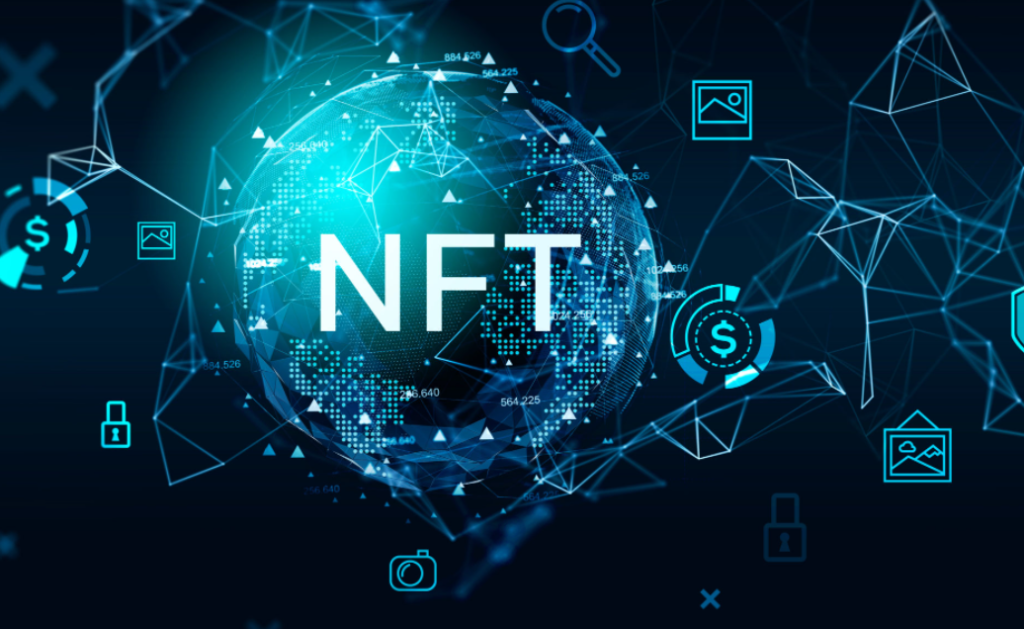In today’s digital age, innovation knows no bounds. From revolutionizing the way we perceive ownership to transforming the art and gaming industries, Non-Fungible Tokens (NFTs) have emerged as a beacon of change. Coupled with the underlying technology of blockchain and its mining processes, these phenomena have captured the imagination of creators, investors, and tech enthusiasts alike. This video covers all the essential topics required to understand NFT from the basics.
Introduction to NFTs
Let’s start from the beginning. What exactly are NFTs? Unlike cryptocurrencies such as Bitcoin or Ethereum, NFTs are unique digital assets that represent ownership or proof of authenticity of a specific item or piece of content. These tokens are indivisible and cannot be exchanged on a one-to-one basis like regular cryptocurrencies due to their distinct characteristics.
Blockchain Technology Explained
NFTs owe their existence and security to blockchain technology. Blockchain operates as a decentralized ledger that records all transactions transparently and securely. Each transaction is a block that, once validated by miners, gets added to the chain. This decentralized nature ensures transparency and mitigates the risk of fraud or manipulation.
Understanding NFT Creation and Use Cases
Creating NFTs involves a process known as “minting,” where digital assets like artwork, music, videos, or even tweets are tokenized on specialized platforms. The use cases for NFTs span various industries, including art, gaming, collectibles, music, and real estate, empowering creators and enthusiasts to redefine digital ownership.

The Role of Blockchain Mining
Blockchain mining plays a pivotal role in the functionality and security of NFTs. Miners validate transactions by solving complex mathematical problems, securing the network, and creating new blocks in the blockchain. However, concerns about energy consumption and its environmental impact, especially in Proof of Work (PoW) systems, have sparked discussions on sustainable mining alternatives.
Environmental Impact of Mining
The environmental impact of blockchain mining, particularly in Proof of Work (PoW) systems like those used in Bitcoin, raises significant concerns due to its energy-intensive nature. The process demands vast computational power, resulting in high electricity consumption and subsequent carbon emissions. This reliance on energy-intensive computations contributes significantly to the carbon footprint, amplifying worries about climate change and environmental degradation. Additionally, the use of fossil fuels in regions where mining occurs intensifies pollution and resource depletion concerns.
Efforts to address these concerns include a shift toward sustainable mining practices, exploring renewable energy sources, and developing more energy-efficient protocols like Proof of Stake (PoS). However, balancing technological advancement with environmental responsibility remains a complex challenge that requires collaboration among stakeholders, governments, and environmental organizations to foster innovation and sustainable solutions in the blockchain industry.
NFT Marketplaces and Trading
NFT (Non-Fungible Token) marketplaces are online hubs where users can buy, sell, and trade one-of-a-kind digital assets represented by NFTs. These platforms enable creators to tokenize various digital content, from artworks to collectibles, reaching a global audience. Each NFT holds unique ownership rights verified by blockchain technology, ensuring its authenticity and provenance. Popular marketplaces like OpenSea and Rarible offer users a diverse array of NFTs, allowing transactions using cryptocurrencies or fiat currencies.
Trading on these platforms involves auctions or fixed-price sales, where users bid on or purchase NFTs. Additionally, users can list their owned NFTs for sale or trade, creating a dynamic marketplace where digital assets change hands based on demand and perceived value. These marketplaces not only serve as monetization avenues for creators but also provide collectors and investors with opportunities to acquire unique assets with cultural and financial significance. As the NFT market grows, these platforms continue to shape the landscape of digital ownership and the expanding NFT economy.
Challenges and Future Trends
The growth of Non-Fungible Tokens (NFTs) comes with challenges and promising trends shaping their future. One hurdle is scalability, where the increasing demand strains existing infrastructure, leading to network congestion and higher transaction fees. Interoperability is another concern as NFTs often reside within specific platforms or blockchains, limiting their transferability and potential use across diverse networks. Legal uncertainties regarding copyright, intellectual property, and taxation add complexity, varying across regions and posing challenges for creators and investors navigating this space.
However, future trends offer solutions. Innovations aim to tackle scalability issues through enhanced blockchain protocols and Layer 2 solutions, improving transaction speeds and reducing fees. Efforts toward greater interoperability, facilitated by projects focusing on cross-chain compatibility and standards, aim to make NFTs more versatile and transferable between different platforms. Moreover, evolving regulatory frameworks seek to bring clarity, potentially encouraging broader adoption and investment in NFTs, and fostering stability and confidence within the ecosystem. As these advancements continue, the NFT landscape is poised for growth, unlocking new opportunities and expanding its impact across various industries.
Security and Ownership in NFTs
Security and ownership stand as pillars within the domain of Non-Fungible Tokens (NFTs), both reinforced by the foundational technology of blockchain. The core security mechanism of NFTs lies in their unique digital signatures, securely stored on the blockchain ledger. These signatures serve as immutable records, certifying the authenticity and ownership of each individual NFT. Through cryptographic principles, blockchain technology safeguards these ownership rights, rendering NFTs tamper-proof and impervious to unauthorized alterations. This decentralized system not only assures transparency but also upholds the integrity of ownership records, ensuring that creators and buyers hold indisputable proof of their digital asset ownership.
The blockchain’s decentralized ledger acts as an unwavering testament to ownership in the NFT realm. Each transaction involving an NFT is permanently recorded on the blockchain, creating an unchangeable and publicly accessible record. This transparent ledger unequivocally verifies the rightful owner of an NFT, fostering trust in the authenticity of digital assets. By offering clear, immutable proof of ownership, the blockchain facilitates seamless transactions, prevents fraudulent claims, and forms a foundation for the burgeoning value and acceptance of NFTs across diverse industries.
Case Studies and Success Stories
- Art and Collectibles:
-
- Beeple’s “Everydays: The First 5000 Days”: This digital artwork by Beeple was sold as an NFT for $69.3 million at Christie’s auction, marking a watershed moment for digital art. It highlighted the potential for artists to monetize their digital creations and establish a new paradigm in the art world.
- Beeple’s “Everydays: The First 5000 Days”: This digital artwork by Beeple was sold as an NFT for $69.3 million at Christie’s auction, marking a watershed moment for digital art. It highlighted the potential for artists to monetize their digital creations and establish a new paradigm in the art world.
- Gaming and Virtual Real Estate
- Decentraland’s Virtual Land Sales: Decentraland, a blockchain-based virtual world, allows users to buy, sell, and develop virtual real estate as NFTs. Parcels of land within the platform have been sold for substantial amounts, demonstrating the demand for virtual assets and the concept of digital land ownership.
- Decentraland’s Virtual Land Sales: Decentraland, a blockchain-based virtual world, allows users to buy, sell, and develop virtual real estate as NFTs. Parcels of land within the platform have been sold for substantial amounts, demonstrating the demand for virtual assets and the concept of digital land ownership.
- Music and Entertainment:
- Kings of Leon’s NFT Album Release: The rock band Kings of Leon released their album “When You See Yourself” as NFTs, offering exclusive perks like limited edition vinyl and VIP concert tickets to NFT buyers. This move showcased the potential for musicians to explore new revenue streams and engage with their fan base through NFTs.
- Kings of Leon’s NFT Album Release: The rock band Kings of Leon released their album “When You See Yourself” as NFTs, offering exclusive perks like limited edition vinyl and VIP concert tickets to NFT buyers. This move showcased the potential for musicians to explore new revenue streams and engage with their fan base through NFTs.
- Sports and Collectibles:
- NBA Top Shot: NBA Top Shot, an NFT-based platform, offers basketball fans the opportunity to buy, sell, and trade officially licensed NBA collectible highlights as NFTs. Some memorable and iconic basketball moments have been sold as digital collectibles, attracting a dedicated user base and driving significant sales.
- NBA Top Shot: NBA Top Shot, an NFT-based platform, offers basketball fans the opportunity to buy, sell, and trade officially licensed NBA collectible highlights as NFTs. Some memorable and iconic basketball moments have been sold as digital collectibles, attracting a dedicated user base and driving significant sales.
- Fashion and Luxury:
- Gucci and Arianee Partnership: Luxury brand Gucci collaborated with blockchain protocol Arianee to create digital certificates of authenticity for its products as NFTs. This initiative aimed to enhance brand transparency and combat counterfeit goods by providing a secure and traceable ownership record for each item.
In conclusion, the emergence of Non-Fungible Tokens (NFTs) alongside the underlying technology of blockchain has sparked a paradigm shift across various industries. NFTs, as unique digital assets representing ownership or proof of authenticity, have unlocked new avenues for creators, investors, and enthusiasts alike.
In essence, the emergence of NFTs and blockchain technology has marked a pivotal moment in our digital evolution. These innovations have not only revolutionized the way we perceive and transact digital assets but have also laid the groundwork for a future where decentralized ownership, creative expression, and investment opportunities intersect, driving forward a new era of digital innovation and empowerment.




